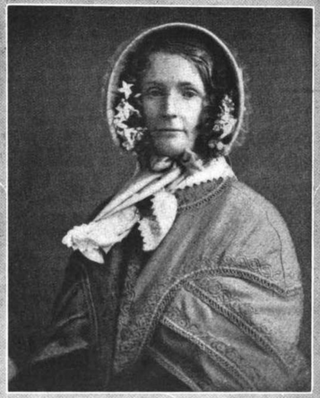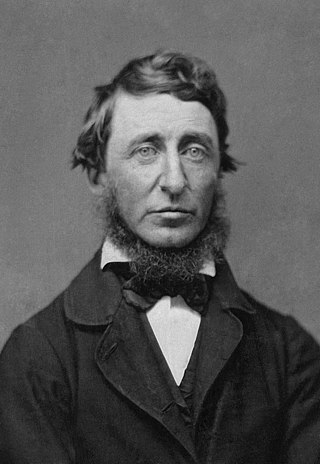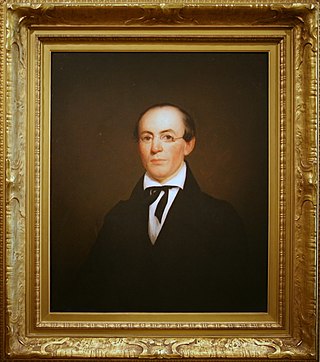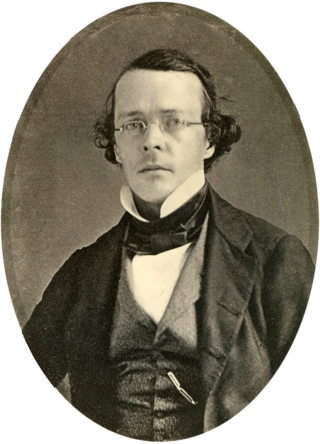
William Lloyd Garrison, who preferred to be called Lloyd and signed himself Wm. Lloyd, was a prominent American Christian, abolitionist, journalist, suffragist, and social reformer. He is best known for his widely read antislavery newspaper The Liberator, which he founded in 1831 and published in Boston until slavery in the United States was abolished by constitutional amendment in 1865.

The American Anti-Slavery Society was an abolitionist society founded by William Lloyd Garrison and Arthur Tappan. Frederick Douglass, an escaped slave, had become a prominent abolitionist and was a key leader of this society, who often spoke at its meetings. William Wells Brown, also a freedman, also often spoke at meetings. By 1838, the society had 1,350 local chapters with around 250,000 members.

Maria Weston Chapman was an American abolitionist. She was elected to the executive committee of the American Anti-Slavery Society in 1839 and from 1839 until 1842, she served as editor of the anti-slavery journal The Non-Resistant.

The Liberator (1831–1865) was a weekly abolitionist newspaper, printed and published in Boston by William Lloyd Garrison and, through 1839, by Isaac Knapp. Religious rather than political, it appealed to the moral conscience of its readers, urging them to demand immediate freeing of the slaves ("immediatism"). It also promoted women's rights, an issue that split the American abolitionist movement. Despite its modest circulation of 3,000, it had prominent and influential readers, including Frederick Douglass, Beriah Green and Alfred Niger. It frequently printed or reprinted letters, reports, sermons, and news stories relating to American slavery, becoming a sort of community bulletin board for the new abolitionist movement that Garrison helped foster.

Adin Ballou (1803–1890) was an American proponent of Christian nonresistance, Christian anarchism, and Christian socialism. He was also an abolitionist and the founder of the Hopedale Community. Through his long career as a Universalist and Unitarian minister, he tirelessly advocated for the immediate abolition of slavery and the principles of Christian anarcho-socialism, and promoted the nonviolent theory of praxis in his prolific writings. Such writings drew the admiration of Leo Tolstoy, who frequently cited Ballou as a major influence on his theological and political ideology in his nonfiction texts like The Kingdom of God is Within You, along with sponsoring Russian translations of some of Ballou's works. As well as heavily inspiring Tolstoy, Ballou's Christian anarchist and nonresistance ideals in texts like Practical Christianity were passed down from Tolstoy to Mahatma Gandhi, contributing not only to the nonviolent resistance movement in the Russian Revolution led by the Tolstoyans but also Gandhi's early thinkings on the nonviolent theory of praxis and the development of his first ashram, the Tolstoy Farm. In a recent publication, the American philosopher and anarchist Crispin Sartwell wrote that the works by Ballou and his other Christian anarchist contemporaries like William Lloyd Garrison directly influenced Gandhi and Martin Luther King Jr.

Abby Kelley Foster was an American abolitionist and radical social reformer active from the 1830s to 1870s. She became a fundraiser, lecturer and committee organizer for the influential American Anti-Slavery Society, where she worked closely with William Lloyd Garrison and other radicals. She married fellow abolitionist and lecturer Stephen Symonds Foster, and they both worked for equal rights for women and for Africans enslaved in the Americas.

The Service is an essay written in 1840 by Henry David Thoreau. He submitted it to The Dial for publication, but they declined to print it. It was not published until after Thoreau's death.

George Bradburn was an American politician and Unitarian minister in Massachusetts known for his support for abolitionism and women's rights. He attended the 1840 conference on Anti-Slavery in London where he made a stand against the exclusion of female delegates. In 1843 he was with Frederick Douglass on a lecture tour in Indiana when they were attacked. Lydia Maria Child wrote with regard to his work on anti-slavery that he had " a high place among the tried and true."
Come-outer is a phrase coined in the 1830s which denotes a person who withdraws from an established organization, or one who advocates political reform.

The Massachusetts Anti-Slavery Society, headquartered in Boston, was organized as an auxiliary of the American Anti-Slavery Society in 1835. Its roots were in the New England Anti-Slavery Society, organized by William Lloyd Garrison, editor of The Liberator, in 1831, after the defeat of a proposal for a college for blacks in New Haven.

Edmond Quincy V (1808–1877) was an American author and reformer.

Lucretia Mott was an American Quaker, abolitionist, women's rights activist, and social reformer. She had formed the idea of reforming the position of women in society when she was amongst the women excluded from the World Anti-Slavery Convention held in London in 1840. In 1848, she was invited by Jane Hunt to a meeting that led to the first public gathering about women's rights, the Seneca Falls Convention, during which Mott co-wrote the Declaration of Sentiments.
Amory Hall was located on the corner of Washington Street and West Street in Boston, Massachusetts, in the 19th century. Myriad activities took place in the rental hall, including sermons; lectures by Henry David Thoreau, Ralph Waldo Emerson, William Lloyd Garrison; political meetings; exhibitions by Rembrandt Peale, George Catlin, John Banvard; moving panoramas; magic shows; concerts; and curiosities such as the "Nova Scotia Giant Boy."

The Boston Female Anti-Slavery Society (1833–1840) was an abolitionist, interracial organization in Boston, Massachusetts, in the mid-19th century. "During its brief history ... it orchestrated three national women's conventions, organized a multistate petition campaign, sued southerners who brought slaves into Boston, and sponsored elaborate, profitable fundraisers."

John Telemachus Hilton was an African-American abolitionist, author, and businessman, who established barber, furniture dealer, and employment agency businesses. He was a Prince Hall Mason and established the Prince Hall National Grand Lodge of North America and served as its first National Grand Master for ten years. He also was a founding member of the Massachusetts General Colored Association, and active member and author in the Anti-Slavery movement.

Isaac Knapp was an American abolitionist printer, publisher, and bookseller in Boston, Massachusetts. He is remembered primarily for his collaboration with William Lloyd Garrison in printing and publishing The Liberator newspaper.
James George Barbadoes was an African-American, community leader, and abolitionist in Boston, Massachusetts in the early 19th century. Dedicated to improving the lives of people of color at the local level, as well as the national level.
The Massachusetts Abolition Society was an abolitionist organization founded by a group of individuals who disagreed with the progressive, and often radical, politics of William Lloyd Garrison and his followers of the Massachusetts Anti-Slavery Society. The former group particularly took issue with Garrison's non-government sentiments and advocacy of women’s rights.
Thankful Southwick was an affluent Quaker abolitionist and women's rights activist in Boston, Massachusetts. Thankful was lifelong abolitionist who joined the Boston Female Anti-Slavery Society in 1835 with her three daughters. She was present at both the 1835 Boston Mob and the Abolition Riot of 1836. During the 1840 schism in the Boston Female Anti-Slavery Society, Thankful sided with the Westons, Chapmans, Childs, Sergeants, and other radical Garrisonians to reestablish the Boston Female Anti-Slavery Society. She also later joined the New England Non Resistance Society. She held several elected offices within the Boston Female Anti-Slavery Society, including counselor in 1837, as well as President in 1840, 1841, 1842, and 1844. Thankful was also involved in the women's rights movement and was an attendee and signer of the call of the first National Women's Rights Convention held in Worcester, Massachusetts, in 1850. Thankful and Joseph Southwick's house was both a gathering place for fellow abolitionists and a stop on the Underground Railroad for fugitive slaves. During her years of activism in Boston, Thankful and her family were closely acquainted with notable abolitionists and women 's rights activists, including William Lloyd Garrison, Elizabeth Cady Stanton, Frederick Douglass, Lydia Maria Child, Maria Weston Chapman, and George Thompson.














